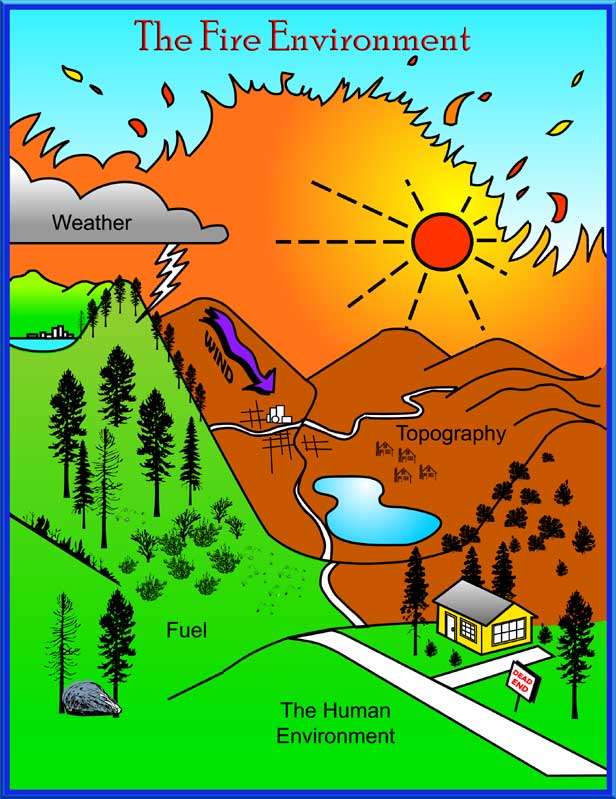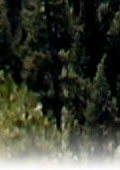A GUIDE TO
"THE FIRE ENVIRONMENT"
The "fire environment" is defined as the "surrounding conditions,
influences, and modifying forces that determine wildfire behavior."
Firefighters recognize three components of the fire environment: weather,
topography, and fuel. Together, these three components affect the likelihood
of a fire start, speed and direction at which a wildfire will travel,
intensity at which a wildfire burns, and the ability to control and
extinguish a wildfire. Although weather and topography cannot be changed,
the fuels (or vegetation) can be modified. Consequently, many of our
opportunities to reduce the wildfire threat lie in proper management
and manipulation of wildland vegetation.
|
 |
WEATHER:
Dry, hot
and windy weather increases the likelihood of a major wildfire. These conditions
make ignition easier, allow fuels to burn more rapidly, and increase fire
intensity. High windspeeds, in particular, can transform a small, easily
controllable fire into a catastrophic event in a matter of minutes. |
| TOPOGRAPHY:
Of the topographic
features, the steepeness of slope is among the most influential on fire
behavior. As the steepness of slope increases, the faster a fire will spread.
Other important topographic features include aspect (south and southwest
slopes usually have more fires) and steep, narrow drainages (chimneys) which
can significantly increase the rate of firespread. |
| FUEL:
Fuel is required
for any fire to burn. In regards to wildfire, fuels almost always consist
of living vegetation (trees, shrubs, grass, and wildflowers) and dead plant
material (dead trees, dried grass, fallen branches, pine needles, etc.).
Houses, when involved in a wildfire, become a source of fuel. the amount,
size moisture content, arrangement, and other fuel characteristics influence
ease of ignition, rate of fire spread, length of flames produced, and other
fire behaviors. |
| THE
HUMAN ENVIRONMENT:When
people are living in high hazard fire environments, the human built environment
becomes an important factor in predicting the loss of life and property.
Untreated wood shake and shingle roofs, narrow roads, limited access, lack
of fire-wise landscaping, inadequate water supplies, and poorly planned
subdivisions are examples of increased risk to people living with the threat
of wildfire. |
Return to the Trinity County RCD Home Page
|


